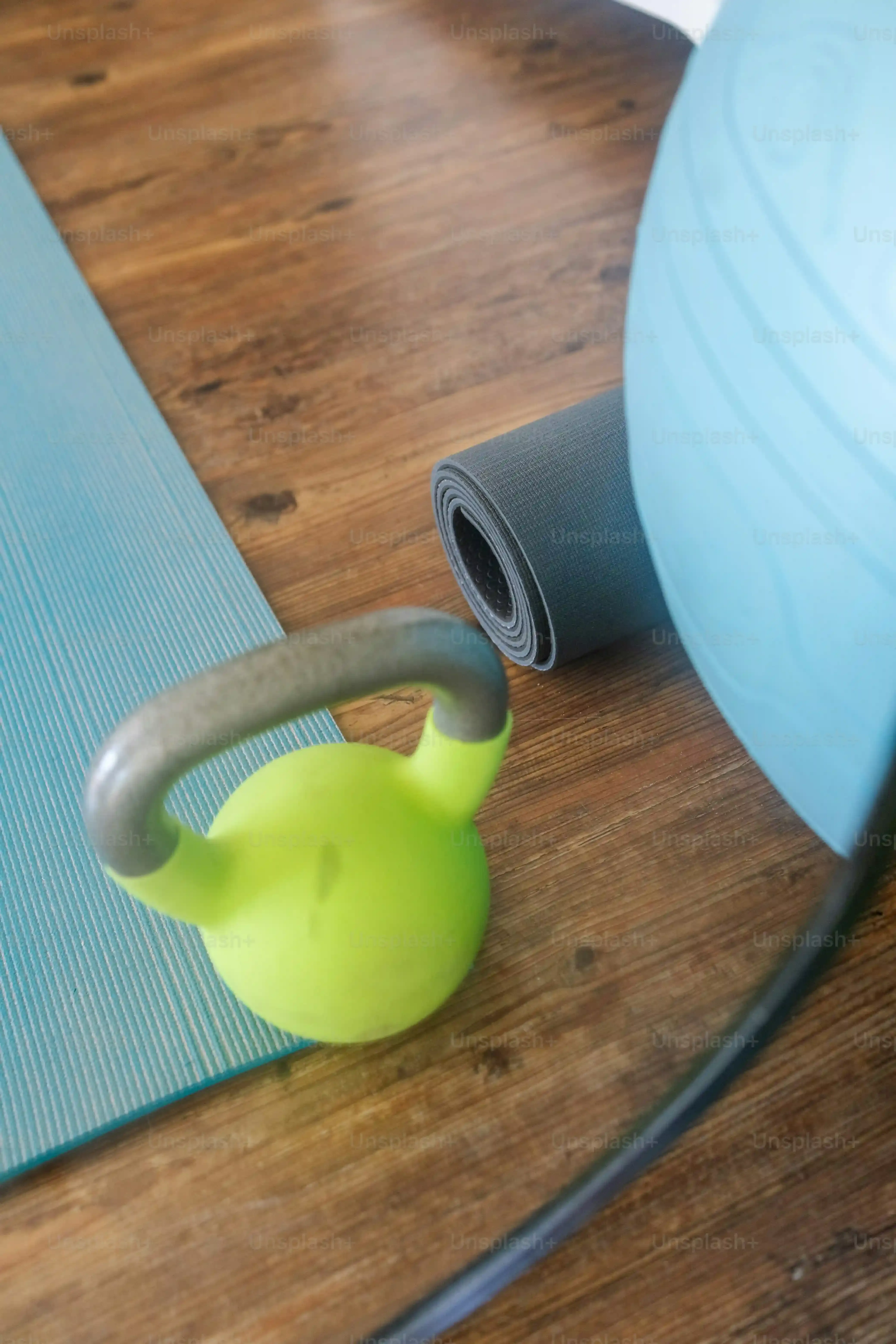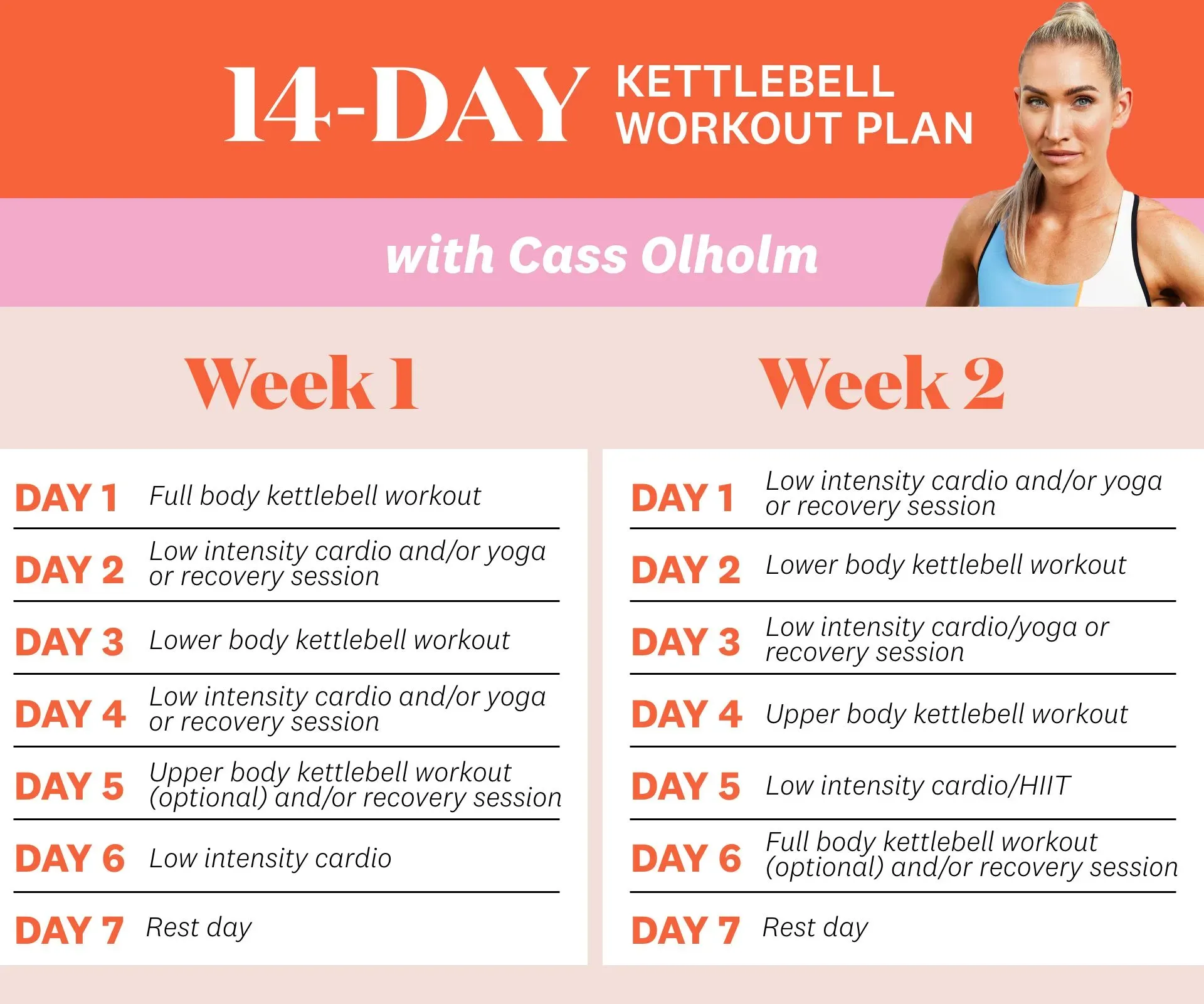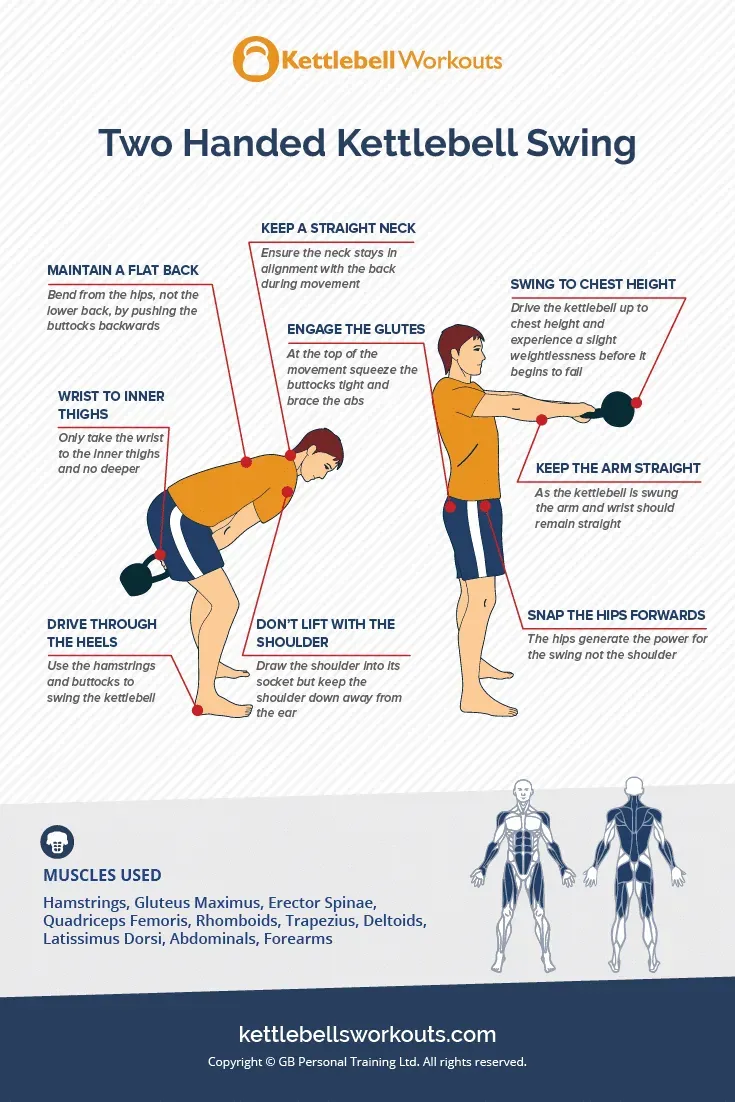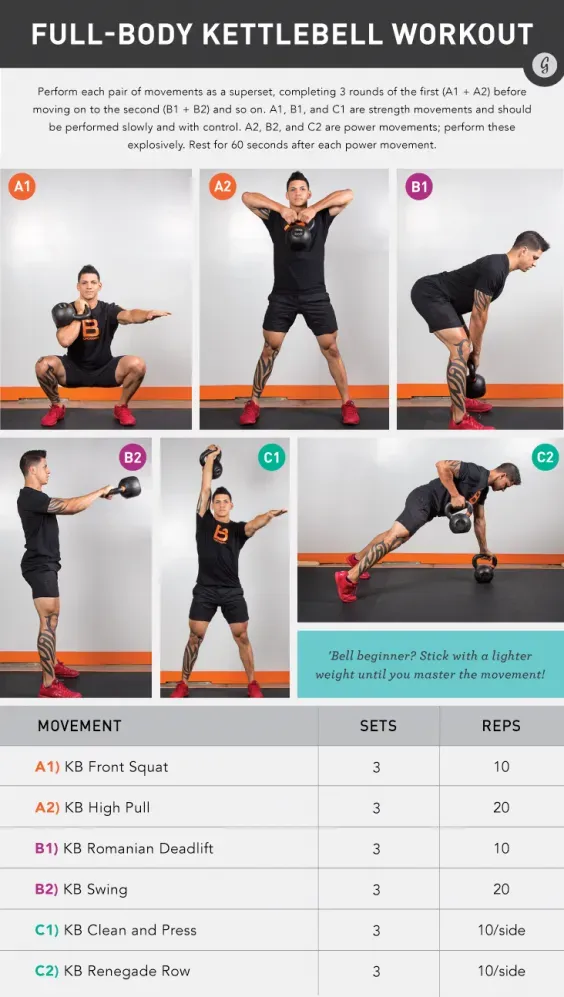Table of Contents
So, you’ve got a kettlebell. Maybe it’s gathering dust in a corner, or maybe you’re swinging it around, feeling like a modern-day strongman or woman. A common question pops up pretty quickly: exactly how long should a kettlebell workout be? Is it a quick 15-minute blast, or are we talking epic hour-long sessions that leave you questioning your life choices? Forget the generic fitness guru answers that tell you "it depends" without telling you *what* it depends on. Getting the duration right is key to seeing results without burning out or, worse, getting injured. We're cutting through the noise to figure out what makes sense for you, your goals, and your current fitness level. Spoiler alert: it’s less about the clock and more about smart training. Let’s dive into the real factors that determine just how long your kettlebell session needs to last to actually make a difference.
Figuring Out How Long Should a Kettlebell Workout Be
Figuring Out How Long Should a Kettlebell Workout Be
The Initial Head Scratching
Alright, let's be real. You pick up a kettlebell, watch a couple of videos that look like controlled chaos, and the first thing you wonder after "Am I going to drop this on my foot?" is " how long am I supposed to do this?" It's not like running on a treadmill where you just punch in 30 minutes and zone out. Kettlebell workouts feel different. They hit you fast and hard if you're doing them right. So, this whole question of figuring out how long should a kettlebell workout be isn't just academic; it's practical. You need a starting point, something more solid than "until you're tired," because "tired" can mean a lot of things.
Why "Just Do 30 Minutes" Falls Short
You'll hear people toss out numbers – 20 minutes, 30 minutes, maybe 45 if they're feeling ambitious. But slapping a random timer on your session without considering what you're actually *doing* is like trying to bake a cake by just putting ingredients in the oven for a set time, regardless of the temperature or recipe. A high-intensity complex of swings, cleans, and snatches for 15 minutes can be far more demanding and effective than 40 minutes of half-hearted goblet squats and bicep curls. The clock is just one variable, and frankly, it's not the most important one when you're figuring out how long should a kettlebell workout be for *you*.
What are you actually trying to achieve?
- Build serious strength?
- Boost cardiovascular fitness?
- Improve power and explosiveness?
- Just move a bit and feel better?
It's About Intensity, Not Just the Timer
Forget the stopwatch for a second. The real driver behind how long your kettlebell workout should be is the intensity and the specific goal of that session. Are you working at near-maximal effort for short bursts with long rests? That's a power or strength focus, and the total *work* time will be short, even if the session duration with rest is longer. Are you grinding through complexes with minimal rest to build endurance and conditioning? That's a different beast entirely and will dictate a different kind of session length. We aren't just filling time; we're applying a specific stimulus to get a specific result. The duration is a consequence of the work, not the primary target.
Factors That Dictate How Long Your Kettlebell Workout Should Be
Factors That Dictate How Long Your Kettlebell Workout Should Be
Your Starting Point Matters, A Lot
Let's pump the brakes for a second. If you've just picked up a kettlebell yesterday, your answer to how long should a kettlebell workout be is going to be wildly different from someone who's been slinging iron for years. Beginners need shorter sessions. Period. Why? Because you're not just building muscle or burning calories; you're building skill. Learning the swing, the clean, the press – these movements require focus and coordination. Trying to push for an hour when you're still figuring out how not to whack yourself in the shins is a recipe for frustration and injury, not fitness. Start with 10-15 minutes of focused practice and simple movements. As your technique improves and your body adapts, you can gradually layer on more time and complexity.
What Are You Actually Trying to Accomplish?
Your goals are the primary architects of your workout length. If your aim is pure strength – think heavy presses or squats for low reps – your work periods will be brief but intense, followed by longer rest. The total *session* might be 30-45 minutes, but the actual time under tension is much less. Compare that to a conditioning goal using complexes or high-rep swings. Here, you're working for longer durations with minimal rest between exercises or rounds. A 20-minute high-intensity conditioning circuit can leave you feeling far more spent than a 40-minute strength session with plenty of rest. So, before you set a timer, ask yourself: am I here to lift heavy things or to make my lungs burn?
Training Goal | Typical Workout Structure | Common Duration Range (Session) |
|---|---|---|
Strength | Low reps (3-5), longer rest (1-3 min), few exercises | 30-45 minutes |
Conditioning/Endurance | Higher reps (10-20+), minimal rest (<1 min), complexes/circuits | 15-30 minutes |
Power/Ballistic | Explosive movements (swings, snatches), moderate reps (5-10), adequate rest (30-90 sec) | 20-35 minutes |
The Specific Exercises Dictate Duration
Not all kettlebell exercises are created equal in terms of how long you can or should do them. You can swing a kettlebell for minutes on end if your conditioning is decent. Trying to do presses or squats for the same continuous duration? Not happening, unless the weight is ridiculously light. Grinds (like presses, squats, get-ups) are slower, strength-focused movements where reps per set are lower, limiting the duration of that specific set. Ballistics (swings, cleans, snatches) are explosive and lend themselves better to longer sets or higher volume within a session, but they are also taxing on your central nervous system. Complexes, where you link multiple exercises without setting the bell down, are conditioning beasts and dictate intense, shorter work periods followed by necessary rest. The moves you choose fundamentally shape how long should a kettlebell workout be.
Sample Kettlebell Workout Lengths for Different Goals
Sample Kettlebell Workout Lengths for Different Goals
Quick Blasts for Power and Conditioning
let's talk about getting the most bang for your buck when you're short on time or focusing on pure power. For goals like boosting explosiveness or hitting high-intensity conditioning, you often don't need a marathon session. Think 15-25 minutes, including a brief warm-up and cool-down. These workouts are typically structured around ballistic movements – swings, snatches, cleans – done in short, intense bursts followed by planned rest. You might do sets of 5-10 reps, rest for 30-90 seconds, and repeat for a set number of rounds. The total work time is low, but the *effort* during those work periods is sky-high. This isn't about accumulating fatigue over a long period; it's about generating maximum force and power repeatedly. It's like sprinting versus jogging; both are running, but the stimulus and duration are completely different. This is where you figure out how long should a kettlebell workout be when you want to feel like you just ran through a brick wall, but in a good way.
Moderate Sessions for General Fitness and Fat Loss
If your aim is general fitness, improving work capacity, or tapping into fat loss, a moderate duration often hits the sweet spot. We're talking 25-40 minutes here. This length allows for a solid warm-up, hitting multiple movement patterns (swings, squats, presses, rows), and incorporating complexes or circuits with shorter rest periods between exercises. You can cycle through a series of exercises for a set time or number of rounds. This duration provides enough time under tension and metabolic stress to challenge your cardiovascular system and work multiple muscle groups without completely annihilating you. It’s the bread and butter for many people just looking to be strong, fit, and healthy without dedicating an hour-plus to training every day. It's a practical answer to how long should a kettlebell workout be for consistent, well-rounded progress.
Goal Type | Typical Duration (Excluding Warm-up/Cool-down) | Workout Style Example |
|---|---|---|
Power/Short Conditioning | 10-20 minutes | EMOM (Every Minute On the Minute) Swings or Snatches |
General Fitness/Metabolic | 20-35 minutes | Complex (e.g., 5 Swings, 5 Cleans, 5 Presses) repeated for rounds with short rest |
Strength Focus (Main Lifts) | 30-45 minutes (including rest) | Heavy Presses or Squats, 3-5 sets of 3-5 reps with longer rest |
Longer Workouts for Strength and Specific Skill Development
Sometimes, you need more time. If you're focusing on building serious strength with heavier weights, practicing technical movements like the Turkish Get-Up, or working on higher volume for specific lifts, your sessions will naturally extend. A strength-focused workout with kettlebells might involve multiple sets of lower reps on exercises like double kettlebell squats or presses, requiring ample rest between sets. This can easily push the session length to 40-60 minutes. Similarly, dedicating time to refining complex skills demands patience and practice, not speed. Think of working up to a heavy single press or spending 20 minutes drilling perfect get-ups. The goal isn't to be constantly moving; it's about quality reps and adequate recovery to lift heavy or perform complex skills safely and effectively. This is a less common answer to how long should a kettlebell workout be for the average person, but essential for those with specific strength or skill goals.
Common Mistakes When Deciding How Long Should a Kettlebell Workout Be
Common Mistakes When Deciding How Long Should a Kettlebell Workout Be
Ignoring Your Current Fitness Level and Skill
One of the quickest ways to mess up how long should a kettlebell workout be is pretending you're fitter or more skilled than you are. Beginners often see experienced folks swinging away for 30 minutes and think they need to do the same on day one. This is a terrible idea. Your body isn't ready for that volume or intensity yet. Your technique is still developing, which means fatigue sets in faster and increases your risk of awkward encounters between the kettlebell and your anatomy. Trying to power through a long session with poor form just reinforces bad habits and makes injury more likely than progress. Start short, focus on nailing the fundamental movements with a lighter bell, and gradually build up your capacity over weeks and months, not days.
Focusing Solely on the Clock, Not the Work
Another classic blunder when figuring out how long should a kettlebell workout be? Getting obsessed with the timer and forgetting about the actual work being done. You see people dragging themselves through 45 minutes, taking long, unnecessary breaks, or just going through the motions with a weight that's too light. They hit their 45-minute mark and feel accomplished because they spent that much *time*, but the stimulus was minimal. Conversely, someone might do a brutally effective 20-minute session with focused intensity and minimal rest, getting far better results. The goal isn't to occupy time; it's to apply a sufficient challenge. Are you hitting the right number of sets and reps at the right intensity for your goal? Are you resting appropriately? These factors dictate effectiveness more than the total time elapsed.
Common Mistakes to Avoid:
- Training long with poor form.
- Choosing duration over intensity/volume.
- Comparing your session length to advanced lifters.
- Ignoring rest periods or taking excessive rest.
- Pushing through pain instead of stopping.
Maximizing Results, Regardless of How Long Your Kettlebell Workout Is
Maximizing Results, Regardless of How Long Your Kettlebell Workout Is
Nail the Fundamentals, Forget the Clock
Look, we've talked about how long should a kettlebell workout be, but the dirty little secret is that the timer means squat if you're moving like a newborn giraffe on roller skates. Seriously. You can spend an hour swinging a kettlebell incorrectly and get nothing but a sore back and a bruised ego. Or, you can spend 15 focused minutes executing perfect swings, crisp cleans, and controlled presses and build actual strength and power. The quality of your reps is king. Master the hip hinge before you try to do 100 swings. Own the rack position before you attempt heavy presses. Spend time warming up properly and cooling down. These aren't optional add-ons; they are fundamental to getting results and staying injury-free, regardless of whether your session is a quick 20 minutes or a more involved 45. Focus on feeling the right muscles work and maintaining tension where you need it.
Think of it like this: Would you rather have one perfectly crafted espresso that wakes you up and tastes amazing, or a giant, weak cup of lukewarm coffee that just makes you feel vaguely disappointed? Quality over quantity, folks.
Keys to Quality Kettlebell Training:
- Prioritize technique over weight or reps.
- Record yourself occasionally to check form.
- Listen to your body; don't push through sharp pain.
- Use appropriate warm-ups and cool-downs.
- Seek qualified coaching if possible.
Consistency and Smart Progression Trump Duration
Getting results from kettlebells isn't about heroic, infrequent, marathon sessions. It's about showing up consistently and applying progressive overload over time. Whether your kettlebell workout is 15 minutes or 40 minutes, doing it consistently 3-4 times a week will yield far better results than sporadic hour-long sessions. Once you've mastered the basic movements and can complete your planned workout comfortably, you need to make it harder. This doesn't necessarily mean adding time. It could mean using a heavier bell, doing more reps or sets in the same amount of time, reducing rest periods, or moving to more complex variations of exercises. This is how you force your body to adapt and get stronger or fitter. The length of your workout is just a container; what you put *in* that container and how you challenge yourself over weeks and months is what truly drives progress, no matter how long should a kettlebell workout be on any given day.
Finding Your Kettlebell Workout Sweet Spot
Ultimately, pinning down exactly how long should a kettlebell workout be isn't about hitting a magic number on a timer. It's about aligning the duration with your specific goals, your current fitness capacity, and the intensity of the session. A short, sharp burst of high-intensity swings and snatches demands a different timeframe than a longer, more moderate strength circuit. Listen to your body, track your progress, and adjust as needed. The effectiveness of your kettlebell training hinges less on the minutes ticked by and more on the quality of movement and the intelligence behind the programming. Don't just work out longer; work out smarter.